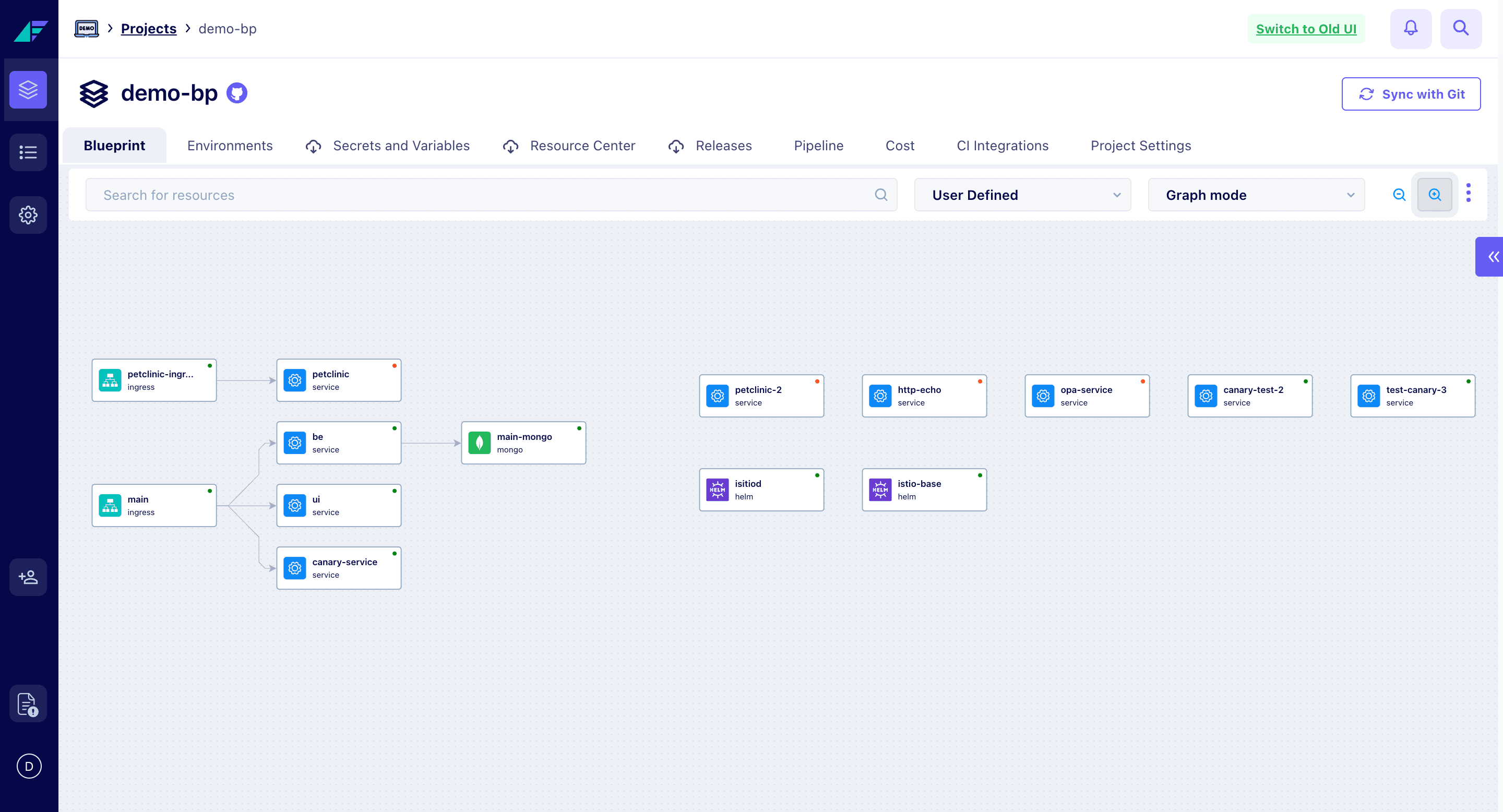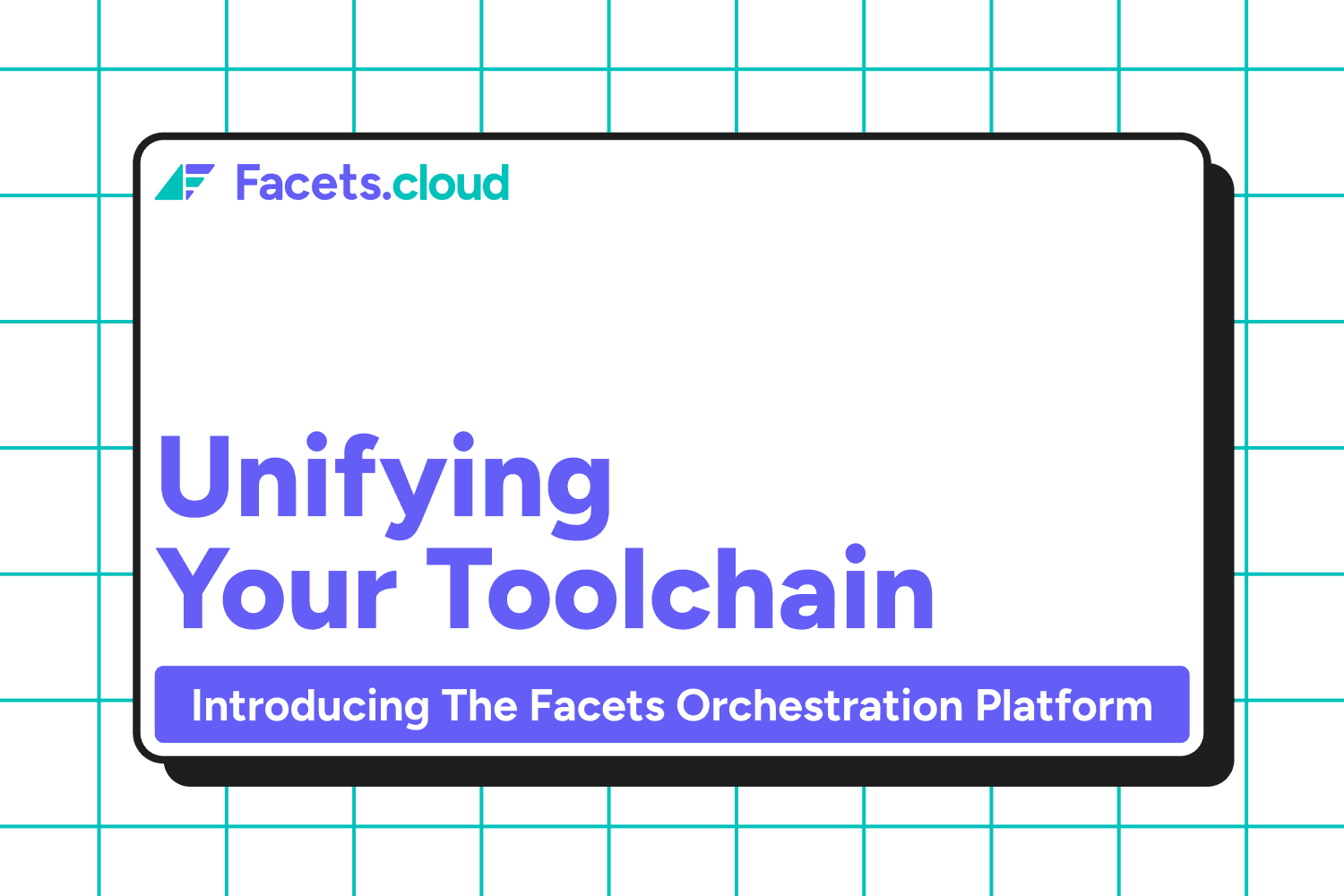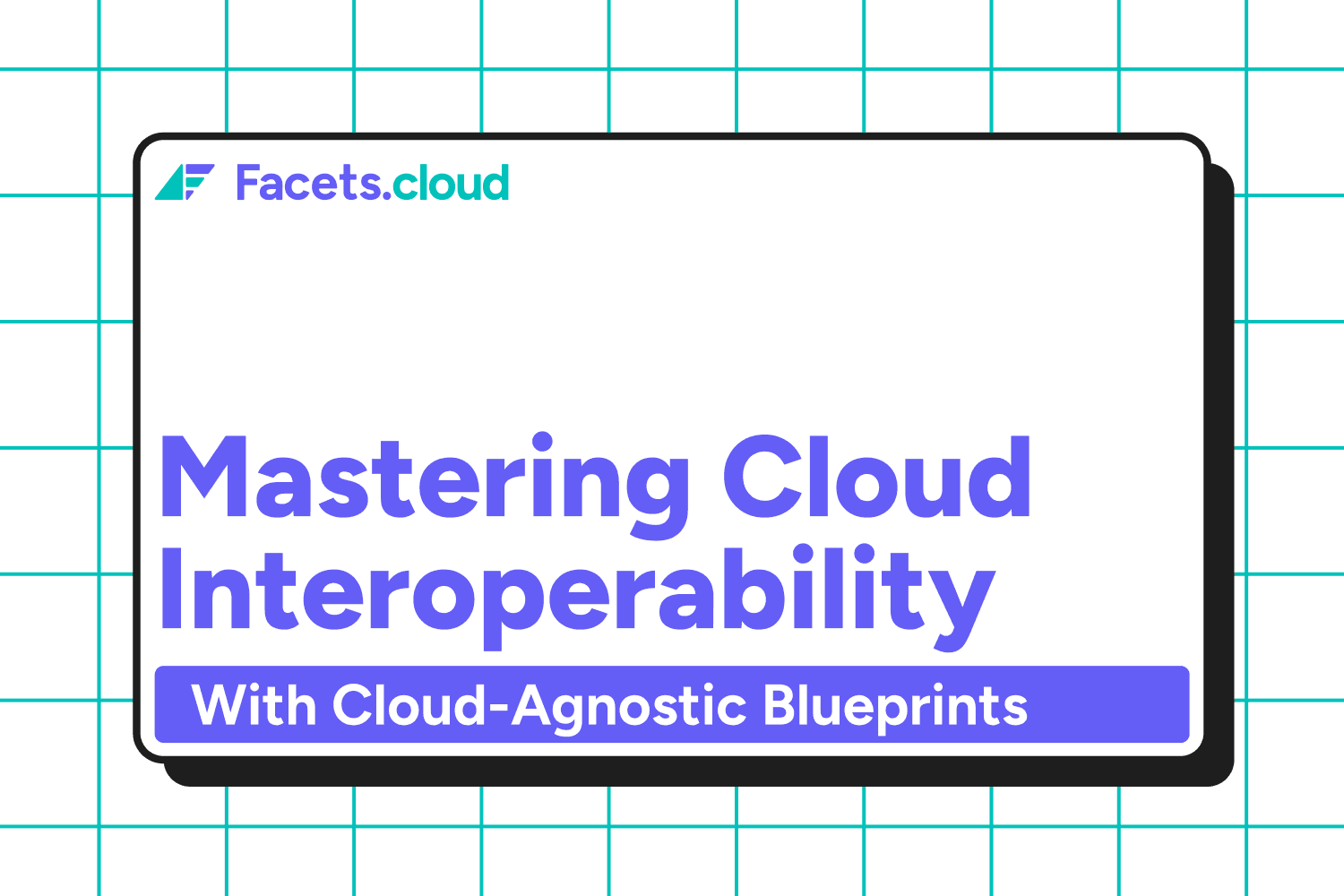In the complex landscape of modern software development, critical information about a software product—its components, dependencies, infrastructure, policies, and configurations—is often scattered across disparate documents, ticketing systems, custom scripts, and various Infrastructure as Code (IaC) files. This fragmentation not only inflates collaboration efforts but also makes it nearly impossible to maintain "zero drift" throughout the Software Delivery Lifecycle (SDLC).
At Facets, we recognise that achieving consistency, efficiency, and scale requires a unified approach. This is precisely why we leverage blueprints as the foundational element for streamlined and reliable software delivery.
What are Blueprints?

At their core, blueprints are declarative representations of your entire application architecture. They replace the traditional, fragmented approach by providing a single source of truth for all elements of your software product. Think of a blueprint as a detailed plan for a house, offering a clear understanding of the system's design and required components before construction begins.
Blueprints define:
Resources such as services, databases, caches, queues, cloud-native resources, scheduled jobs, one-time jobs, and both stateless and stateful applications.
Relationships and dependencies between these components.
Any centrally managed declarations, like database schemas, dashboards, or alerts.
Crucially, these definitions are cloud-agnostic and can be constructed using simple JSON schemas, making them highly flexible and adaptable. This means application teams can define what they need – for example, a database, a service, or a cluster – without needing to understand the underlying, low-level Infrastructure as Code (IaC) details.
How Blueprints Drive Your SDLC?
Here’s how they are used:
Environment Manifestation: Blueprints can be manifested to any number of managed environments on any supported cloud provider, including AWS, Azure, GCP, or even bare metals, through the Facets Orchestrator. This transforms environment creation from a time-consuming, manual runbook process into an "Environment-as-a-Service," always ready to be created and mutated.
Automated IaC Generation: Leveraging the user-defined intents within blueprints, the platform automatically generates compliant Terraform to provision your infrastructure. This eliminates the need for project-specific automation and manual "glue code" that typically connects disparate tools like Terraform, Argo, GitHub, and Helm.
Unified Delivery Pipeline: Blueprints consolidate infrastructure, code, and configuration into a single, cohesive model, enabling managed delivery and ensuring drift-free environments. This means that instead of separate pipelines for infrastructure, code, and configuration, all concerns are addressed within a single, streamlined process.
Git-based Workflows: Blueprints are stored in Git repositories, ensuring version control, immutability, and traceability of all changes. This allows for a typical workflow involving pull requests, reviews, and merges, which are then detected and propagated to environments by Facets Orchestrator. This strong versioning system also provides a safety net for rollbacks.
The Unrivalled Advantages of Blueprints
Single Source of Truth: Blueprints unify knowledge silos, creating a centralised, clear, and auditable source of truth for your entire infrastructure and application architecture.
Reduced Cognitive Load: They simplify complex architectures by allowing teams to define needs at a higher-level abstraction, removing the requirement for developers to possess deep Terraform knowledge.
Standardisation and Consistency: By centrally defining how infrastructure is built and consumed, blueprints drive 100% standardisation across projects and teams, ensuring consistent and drift-free environments.
Enhanced Flexibility: Blueprints promote abstraction, allowing you to modify underlying implementation details (e.g., changing a database "flavour") without altering the core definition, fostering cloud portability and easing cloud migration challenges.
Streamlined Management: Each resource type defined within a blueprint is modular, simplifying management, versioning, and collaboration across the organisation.
Increased Productivity: By eliminating manual configuration, reducing debugging cycles, and automating repetitive tasks, blueprints contribute to significant increases in developer productivity (up to 20%) and reductions in DevOps tickets (up to 95%).
Proactive Governance: Blueprints embed compliance and security "by design" rather than relying on reactive audits. They provide explicit lineage from teams to blueprints, environments, and cloud resources, enhancing auditability and enabling proactive guardrails.
AI-Powered SDLC: Blueprints lay the foundation for an AI-powered SDLC roadmap, where AI agents can assist with generating infrastructure from conversation or code, debugging, and providing release insights.
By embracing the power of blueprints, organisations can move away from fragmented, manual processes to a streamlined, automated, and highly consistent approach to software delivery, empowering teams to focus on innovation and business value.
Before you go
By consolidating infrastructure, code, and configuration, Facets enables faster, more reliable software delivery that empowers teams to focus on innovation and business value.
Experience Facets Blueprints firsthand by booking a demo with our founders here.


